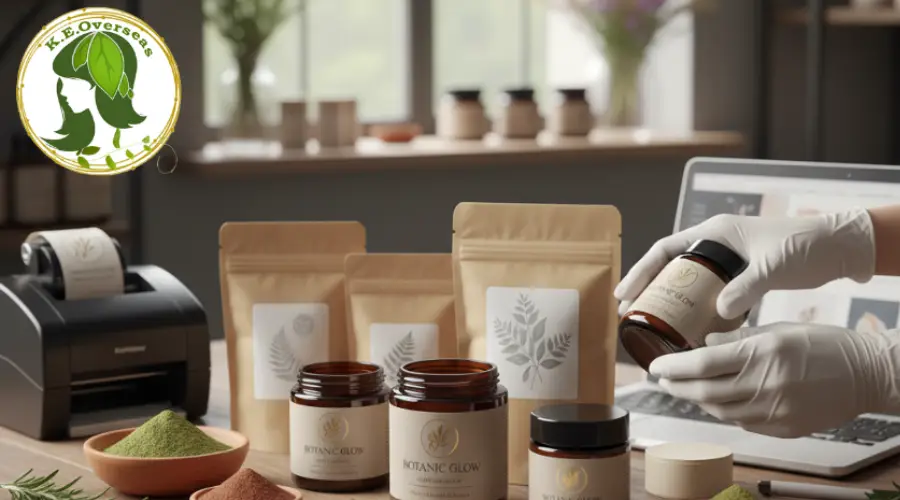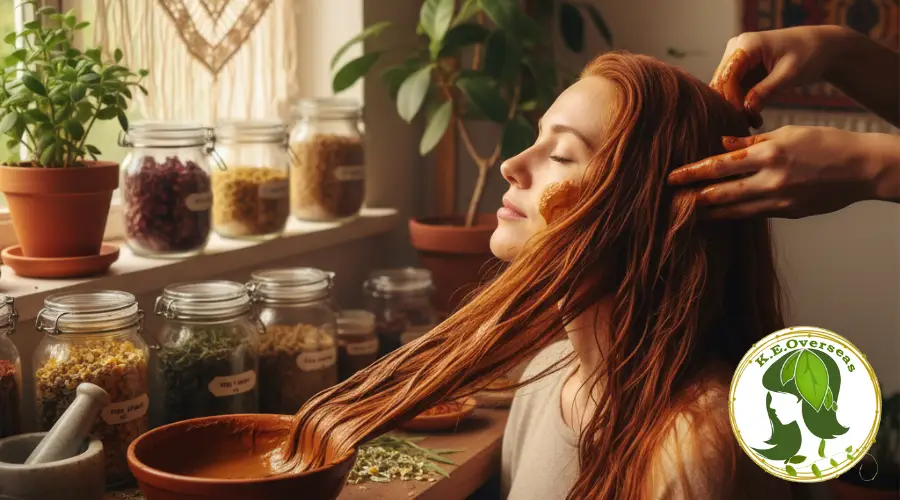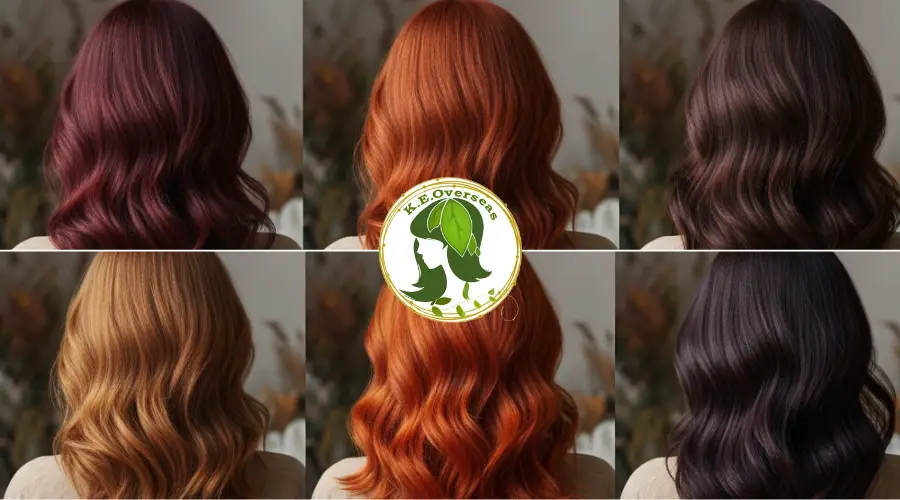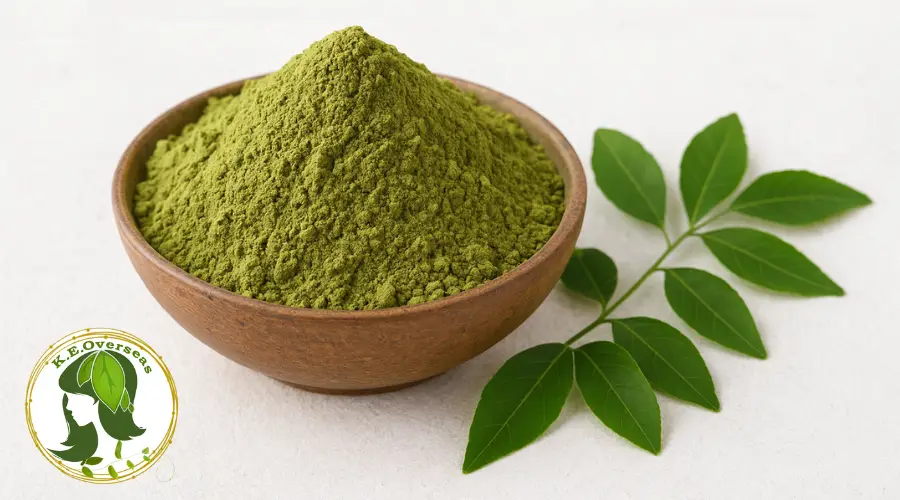Henna based hair dye has been cherished for thousands of years as a natural, vibrant, and nourishing way to color hair. From ancient civilizations in Egypt and India to modern-day beauty enthusiasts worldwide, henna remains a popular choice for those seeking a chemical-free alternative to synthetic hair dyes. This comprehensive guide will explore everything you need to know about henna hair dye from its origins and benefits to how to use it safely and effectively. Whether you’re a first-timer or a seasoned henna user, this ultimate guide will help you achieve beautiful, healthy, and richly colored hair.
What is Henna?
Henna is a natural dye derived from the leaves of the Lawsonia inermis plant, a shrub native to North Africa, the Middle East, and South Asia. The leaves contain a red-orange pigment called lawsone, which binds to keratin in hair and skin, producing a lasting stain.
Historically, henna has been used not only for hair coloring but also for body art (mehndi), fabric dyeing, and medicinal purposes. Its use dates back over 5,000 years, with evidence found in ancient Egyptian tombs and Indian texts.
How Does Henna Work?
Henna works by depositing the lawsone pigment onto the hair shaft. Unlike chemical dyes that penetrate the hair cortex and alter the natural pigment, henna coats the hair cuticle, creating a semi-permanent stain. This means henna does not lighten hair but adds a reddish-orange tint that varies depending on your natural hair color and the henna’s quality.
The dye molecules in henna bind strongly to keratin, the protein that makes up hair, which is why henna stains are long-lasting and resistant to washing out quickly.
Benefits of Using Henna Hair Dye
Natural and Chemical-Free: Henna contains no synthetic chemicals, ammonia, or peroxide, reducing the risk of allergic reactions and scalp irritation.
Conditioning Properties: Henna acts as a natural conditioner, coating the hair shaft and making hair feel thicker, smoother, and shinier.
Strengthens Hair: By binding to keratin, henna can strengthen hair strands, reducing breakage and split ends.
Scalp Health: Henna has antifungal and antimicrobial properties that can help soothe scalp conditions like dandruff and itchiness.
Long-Lasting Color: Henna stains hair for weeks to months, gradually fading without harsh chemical residues.
Eco-Friendly: Henna is biodegradable and sustainable, making it an environmentally friendly choice.
What Colors Can You Get with Henna?
Henna naturally imparts a range of warm tones, primarily reddish-orange. However, the final color depends on several factors:
Natural Hair Color: On light blonde or gray hair, henna produces bright orange or copper tones. On darker hair, the color is subtler, often a deep auburn or mahogany.
Henna Quality: Pure, high-quality henna powder yields richer, more vibrant colors.
Application Time: Longer application times deepen the color.
Mixing Ingredients: Adding other natural ingredients like indigo, amla, or coffee can modify the color, producing shades from deep brown to burgundy.
Types of Henna for Hair Dyeing
Pure Henna: 100% natural henna powder with no additives. Best for those seeking a bright red-orange tint.
Neutral Henna: Made from Cassia obovata, this type does not impart color but conditions and strengthens hair.
Henna Blends: Henna mixed with other natural dyes like indigo (for black or brown shades) or other herbs to create different colors.
Preparing Henna for Hair Dyeing
Proper preparation is key to achieving the best results with henna:
Choose the Right Henna: Always use body art or hair-quality henna, which is finely sifted and free of chemicals.
Mixing Liquid: Use acidic liquids like lemon juice, orange juice, or black tea to release the dye. Avoid water alone as it slows dye release.
Consistency: Mix henna powder with the liquid to form a thick, yogurt-like paste.
Resting Time: Let the paste sit for 6-12 hours at room temperature to allow dye release.
Optional Additives: Some add essential oils (like lavender or tea tree) for fragrance and scalp benefits.
How to Apply Henna Hair Dye
Applying henna requires patience and care:
Protect Your Skin and Clothes: Wear gloves and cover your clothes with an old towel or cape. Apply petroleum jelly around your hairline to prevent staining.
Section Your Hair: Divide hair into manageable sections for even application.
Apply Paste: Using a brush or your hands, apply henna paste from roots to tips, ensuring full coverage.
Wrap Hair: Cover your hair with plastic wrap or a shower cap to retain moisture and heat, which helps dye absorption.
Leave On: Keep henna on for 1-4 hours depending on desired color intensity.
Rinse Thoroughly: Rinse with water until the paste is removed. Avoid shampooing for 24-48 hours to allow color to develop fully.
How Long Does Henna Color Last?
Henna color typically lasts 4-6 weeks, gradually fading with washing and exposure to sunlight. The stain penetrates the hair cuticle but does not alter the natural pigment, so it fades naturally without harsh regrowth lines.
Henna and Hair pH Balance
Henna paste is naturally acidic (pH around 3.5-5), which helps close the hair cuticle and maintain the hair’s natural pH balance. This acidity can smooth the hair surface, reduce frizz, and enhance shine. Unlike alkaline chemical dyes that lift the cuticle and damage hair, henna’s acidic nature supports hair health.
Common Myths About Henna
Henna Can Turn Hair Green: Pure henna never turns hair green. Greenish hues usually result from mixing henna with metallic salts or chemical dyes.
Henna Can Lighten Hair: Henna does not lighten hair; it only adds color.
Henna is Permanent: Henna stains hair but fades over time. It is semi-permanent, not permanent.
Henna is Difficult to Remove: Henna coats the hair and can be challenging to remove quickly, but it fades naturally with time.
Potential Drawbacks and Precautions
While henna is generally safe, some considerations include:
Allergic Reactions: Though rare, some people may be allergic to henna or additives. Always do a patch test.
Dryness: Henna can dry hair if used excessively or without conditioning afterward.
Color Limitations: Henna primarily produces red tones; achieving other colors requires mixing with other natural dyes.
Interaction with Chemical Dyes: Applying chemical dyes over henna-treated hair can cause unpredictable results or damage.
Tips for Best Results with Henna
- Use fresh, high-quality henna powder.
- Mix henna with acidic liquids and allow dye release time.
- Apply to clean, dry hair.
- Cover hair to retain heat during application.
- Avoid shampooing immediately after rinsing.
- Condition hair regularly to prevent dryness.
- Be patient; color develops over 24-48 hours.
DIY Henna Hair Dye Recipe
Ingredients:
- 100 grams pure henna powder (adjust based on hair length)
- 1/2 cup lemon juice or black tea
- 1 tablespoon olive oil (optional for moisture)
- Essential oils (optional)
Instructions:
- Sift henna powder to remove lumps.
- Gradually add lemon juice or tea, stirring to form a thick paste.
- Cover and let sit for 8-12 hours at room temperature.
- Add olive oil and essential oils before application.
Apply to hair as described above.
Henna hair dye is a timeless, natural alternative to chemical hair dyes that offers vibrant color, conditioning benefits, and scalp health support. Understanding how henna works, how to prepare and apply it, and what to expect can help you achieve stunning, healthy hair with this ancient botanical treasure. Whether you want to embrace your natural red hues or experiment with henna blends, this ultimate guide equips you with the knowledge to make the most of henna hair dye safely and effectively.
Embrace the beauty of nature with henna and enjoy radiant, nourished hair that tells a story of tradition, health, and vibrant color.







